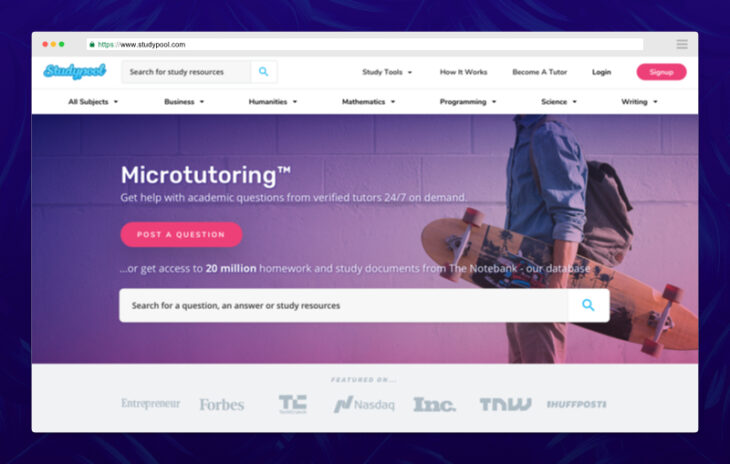Online learning became more popular even before the pandemic hit, and multiple online universities were ranking next to well-known universities with campuses. However, we recognized the real importance of this gem as Covid-19 swept the world into uncertainty. In a move that no one anticipated, the disease led to a massive lockdown and quarantine, causing educational institutes to shut down worldwide.
Suddenly, students accustomed to classes in person had to resort to staring at their screens for hours. Though, all was not lost. As online learning became more popular, it had already reached a height where the shift to online learning was smooth and quite helpful. With a plethora of online lectures, courses, quizzes, and available online, alongside the newly devised online teaching systems, research has shown a relatively increased learning level in students.

Source: Generation T
Contents
How did institutes respond to the pandemic?
Countries worldwide were affected severely due to the sudden pandemic; over 1.2 billion children in 186 countries were affected by the closure of educational institutes. A sudden high demand for online learning platforms arose, so many widely known companies worked on improving their platforms and introducing advanced and faster platforms that students can use to study efficiently.
Applications like Google Classroom and Microsoft Teams helped these institutes cope with the sudden demand. Some institutes resorted to establishing their platforms, while some issued memberships and partnerships for their targeted student body.

Source: Reelae
What does the future look like for students’ education?
While it has become a general opinion that online learning has led to decreased education and understanding and increased procrastination, research and real-life examples beg to differ. Multiple universities around the world were quick to transition, uploading their courses online throughout a short period. Zhejiang University, for example, uploaded over 5000 courses online over a short period of two weeks.
Similarly, this sudden change hasn’t been too harsh on student’s lives. All their course material is now available at one place at their disposal to use as they please. Many people believe that even after the pandemic ends, the online learning systems will stick due to their efficiency and accessibility. Almost everyone who receives a formal education has access to an internet connection.

Source: Best Online Courses
Methodology
As the pandemic took over, it provided the necessary boost for online learning to become the ultimate education source. Classes take place at their scheduled times, conforming to a standard set by educational institutions.
Course material, as well as recorded lectures, are provided to the students via an all-access platform. Through this, students can now do the impossible and turn back time to listen to the lessons again and absorb anything they may have missed.
A personalized study plan accompanied by customized tutoring caters to questioning and practice material provided to the students. All professors usually follow a course outline, which leads to schedule power throughout the course. All in all, it’s an effective way for students and teachers to communicate with each other with ease.

Source: Create Online Courses
Is online learning as effective?
Multiple students around the world were asked this question as the pandemic took over the world. The students appreciate the online resources provided to them and the tools and platforms used by professors and teachers to convey information. With the right technology and the right media provided to the students, online learning could very well open new doors to improved learning.
Contrary to the traditional classroom where the students had to keep up with the teacher’s pace and their classmates to learn the material, now, they’re able to work their way through courses at their own pace- allowing for re-reading, improved learning, and better absorption of content than before.
With active online classes, the live interactions keep the student’s attention throughout the lecture, and with all the content being later provided to the student to review. This content provides the perfect opportunity for students to revise their concepts according to their mental capacity, personalization, and intelligence.
There have been multiple introductions of platforms around the world that aim to aid students in their learning. Websites have been introduced that support online learning amidst this Covid-19 era. You can find an example of this in Studypool.
This platform helps students’ study with access to research material, including questions and notes available at the student’s disposal. It also offers on-demand online tutoring so students can get immediate help if stuck on a difficult topic or problem.

The challenges of online learning
With its benefits, there also exist drawbacks that come with online learning. Online learning is a concept that entirely relies on the internet. However, multiple students worldwide lack a reliable internet connection or even the technology that caters to this. Hence, comes the rift between the privileged and the under-privileged. In this case, privilege works its magic; the one with the better technology has more resources available at their disposal than those with financial troubles.
Some institutes worldwide have been active enough to provide some of their students with the necessary technology required. Nevertheless, it still does not entirely solve the problem. The future may look bright for online learning, but yet again has been ruled by privilege, promoting the digital divide more than ever before.
A solution to this is a more widespread distribution of tech to the underprivileged and efficient platforms that work even in older technology models.

Source: Kliwo
Conclusion
Before the pandemic took over, students all over were used to this repetitive traditional way of learning. However, it proved to be a wake-up call for educational institutions to improve their learning and cater more to the student with its spread. Instead of just delivering information, these online platforms help this knowledge reach their students smoothly.
Online learning innovatively cushioned the mass uncertainty that came with the closure of all educational institutions. Hence, introducing a more efficient, improved way of learning that benefits students worldwide.
